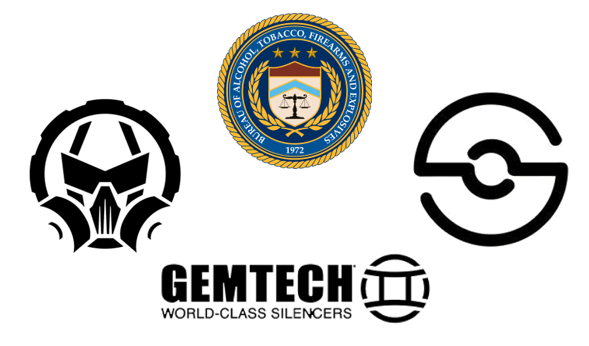ATF’s NFA Processing Gets Private Industry Overhaul
August 18, 2017The ATF’s approval process for the National Firearms Act (NFA) forms has quietly undergone a drastic change and everyone has private industry to thank for it. Modern Rifleman reviewer, Pete M., broke the news over at The Firearm Blog earlier today, and in his post, he covers the system’s basic functionality and how it came to be. Here, we’ll take a closer look at the anticipated impact of the changes.
The new system is relatively simple, but it is expected to make a huge difference in ATF processing times. Essentially, when you purchase an NFA-regulated item of any sort from any dealer in the country (not just Powered By shops), the shop now has the option to go to any of Dead Air’s, Gemtech’s, or Silencer Shop’s sites to fill out the Form 4 information online. Once complete, your dealer prints the application just as he usually would. The service will be provided by the above companies totally free of charge, so be sure to hound your dealer about it. There’s absolutely no reason not to use it. As you might expect, Powered by Silencer Shop purchases will automatically process using the new system.
Here’s where things begin to change. Forms created using the new process print with a special barcode at the top. When the form arrives at the NFA Branch, assistants there can then scan the barcode to automatically log some of the form’s information directly into the ATF’s systems. They no longer need to manually enter every line, saving considerable time and reducing the likelihood of errors. The barcodes also instruct the ATF’s program to complete other administrative tasks without the need for user interaction, meaning fewer clicks and less back and forth for assistants and examiners. Under the covers, this is Silencer Shop’s Powered By system at work. With assistance from Dead Air and Gemtech, Silencer Shop quite literally gave the software to the ATF, meaning the agency is, in many ways, now Powered by Silencer Shop. I don’t know about you, but I find that funny.
You may wonder how big a difference this new system will make, so let’s consider some numbers. As of July 2016, when the ATF 41F changes were adopted, the ATF had an estimated backlog of 300,000 to 350,000 Forms 1 and 4. A positively staggering number, clearing through the paperwork, took them roughly a year. From July until the end of the year, just 40,000 forms rolled in, followed by another 45,000 or so the first half of 2017. Current ATF processing capacity sits at around 30,000 forms per month. With that number in mind, they’re expected to move through the current stack of pending forms in two or three months. Once they finish the existing submissions, they’ll then start work on those submitted with the new barcodes. Assuming current staffing levels, the ATF believes a four-fold increase in capability may be possible. Imagine if, rather than taking an entire year to work through the 41F backlog, the ATF could have rolled through the stack in just three months!
What will all of this mean for approval times? Once outstanding submissions have been approved (probably sometime in October), Silencer Shop hopes that the ATF will be able to bring approval times down to around one month. The limiting factor here isn’t so much the agency’s ability to process forms, but the fact that the required background checks and trust/corporate document validation can take as long as three weeks. Even so, one-month approvals would be immensely appreciated by enthusiasts who are more accustomed to waits that edge closer to a year.
Another noteworthy point is that while the system is now available to the public, Silencer Shop has had the barcode system in place on their end for the last month. As a result, any form submitted through Silencer Shop on July 11 or after already has the barcode and should receive faster processing once it hits an assistant’s desk. Readers who have purchased elsewhere shouldn’t worry too much, though. These system improvements are expected to substantially expedite NFA processing across the board.
As Pete mentions in his piece, there are plenty of people who deserve recognition for this overhaul. The ATF, for their part, could have killed this outright by refusing to work with the industry. Instead, they approached the proposal with a (mostly) open mind. Silencer Shop has worked tirelessly to find technology solutions to the well-outdated NFA process, and this is yet another example of their innovation. Last and not at all least, Dead Air and Gemtech helped to facilitate this undertaking and championed it in front of the ATF. Without their efforts, the agency may not have been so receptive. Without question, this has been a team effort unlike any other we’ve ever seen from this industry, and it’s fair to say that we’re all looking forward to much shorter approval times in the very near future.
An information security professional by day and gun blogger by night, Nathan started his firearms journey at 16 years old as a collector of C&R rifles. These days, you’re likely to find him shooting something a bit more modern – and usually equipped with a suppressor – but his passion for firearms with military heritage has never waned. Over the last five years, Nathan has written about a variety of firearms topics, including Second Amendment politics and gun and gear reviews. When he isn’t shooting or writing, Nathan nerds out over computers, 3D printing, and Star Wars.

